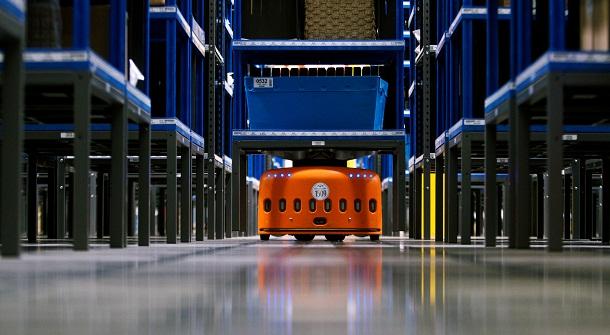It’s been a long-standing fear for decades: Robots replacing humans in the workforce. And there is perhaps no better realization of that fear than Amazon’s new massive fulfillment center, which uses a fleet of robots to move goods around the warehouse instead of people, reports USA Today.
These robots, 15,000 to be exact, are a result of Amazon’s $775 million purchase of robot-maker Kiva Systems back in 2012 and testing in 2013. Looking like a domesticated space robot from Wall-E crashed into a Roomba, these Kiva robots are programmed to bring items that each packer at a packing station needs instead of the traditional method, which involved packers walking to these shelving units and picking out the items themselves. More specifically, the programming tells these robots to bring shelving units with those items to the packers.

Don’t let their size deceive you, though, as these little buggers weigh roughly 350 pounds and can lift items twice their weight, according to Dave Clark, Amazon’s senior vice president for worldwide operation and customer service. Because of their ability to bring these not-so-light shelving units to packers while moving in narrow lanes, Amazon can double the inventory it holds in fulfillment centers. “This dramatically increases what’s available locally, because we can get so much more inventory into one space.”
The robots could also allow Amazon to save $450 million to $900 million a year in labor expenses, reports The Sacramento Bee. Even though the same outlet also reported that Amazon will hire 80,000 seasonal workers to fight the onslaught of holiday deliveries, it’s only a matter of time until these Kiva robots become the norm in all of Amazon’s fulfillment centers.


